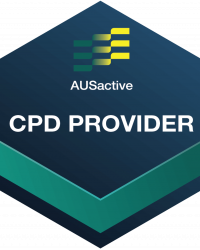Mat Repertoire
Warm Up:
Pelvic Curl
Alternate Names
Shoulder Bridge, Bridge Position
Derived From
Mat Pilates: Pelvic Curl
Primary Element
Warm
Why for Primary?
To identify a neutral position in the pelvis and spine, create proprioception and spinal articulation and activate the abdominal and gluteal muscles.
Secondary Element
Stability
Why for Secondary?
To establish pelvic-lumbar stabilsation by engaging the transversus abdominis to initiate the posterior tilt of the pelvis, and using the gluteal muscles and hamstrings to lift the hips and control the pelvis in hip extension.
Tertiary Element
Mobility
Why Tertiary?
To create movement through the spine, or spinal articulation.
Repetitions
8-10
Plane of Motion
Sagittal
Targeted Muscles
To create pelvis stability and initiate the posterior tilt the targeted muscles are the deep abdominal muscles transversus abdominis.
To lift the hips and move the leg backwards or into hip extension, the primary muscles are the gluteals and hamstrings
- Gluteus maximus
- Posterior head of the adductor magnus
- Hamstrings
Warnings
This exercise may be unsuitable for clients where inversion or spinal articulation is contraindicated or would cause pain. Also watch for clients going up too high on the neck, aim to stay as high as the back of the shoulders.
If the client is unable to lie supine in a pelvic curl position an alternative would be quadruped Cat Stretch, as found in the exercise Warm Down: Cat Stretch.
Execution
Lie supine on the Mat in a neutral pelvis position with knees bent and heels on the Mat in line with the ASIS (hip bones). Arms lengthened beside the torso.
Exhale to draw in the abdominal muscles, imprinting, then lifting the lower back vertebra by vertebra off the Mat. Use the hamstrings to lift the pelvis and torso higher, whilst maintaining the imprinted position. Articulate the spine in the reverse order from the top of the spine, through the lumbar spine to the start position.
Observations
Do a body scan of the client taking note of the following points
- Head and Neck
- Is the back of the neck long and crease free? A slight retraction of the neck with the chin tucked can help avoid straining the neck
- Pelvis
- Are the hip bones even horizontally or is the client leaning to one side?
- Is the client able to slow down and initiate the movement from low abdominals contracting then moving the pelvis back before lifting the hips up?
- Can the client keep their pelvis imprinted or in a posterior pelvic tilt the whole time, avoiding arching the lumbar spine at the top?
- Legs
- Are the feet resting on the Mat and the legs still and relaxed?
Learning Style Technique Cues
Auditory – word associations that connect mind and body
- Engage transverse abdominis to initiate the movement then flex the lumbar spine towards the Mat
- Keep the ribcage connected done towards the hips at the top of the pelvic curl or bridge position
- To return down, sink through the sternum first, then the waist then the hips then the tailbone
- Double check you’re still imprinted at the top of the pelvic curl or bridge position
- Say the client’s name when you’re about to interact with them
Visual
- Image the spine as a string of pearls moving down one vertebra at a time back to the Mat
- Imagine balancing a ruler or pole from the shoulders to knees – keeping a straight line through the front off the body once at the top of the Pelvic Curl or bridge position
- Whilst no one can truly move one vertebra at a time (try and move L4 then L5!), imagine the sequential movement of the spine returning to the Mat
- You may demonstrate a part of the movement as a visual representation for the client to see
Kinaesthetic
- Feel the arms pressing actively into the Mat to stabilise the shoulder girdle
- Release tension in the shoulders and neck whilst stabilising but continue to press arms down actively to avoid moving shoulders
- To return down, feel the back of the ribcage the top connect to the Mat, then the back of the waist, then the hips then the tailbone
- Reach the knees away and forward as the hips start to lift
Modifications and Variations
Regress the exercise by
- Supporting the upper body with a foam wedge or cushion and reducing the range of motion of the exercise
- Reduce the repetitions and/or pace
- Working on: Warm Up: Pelvic Tilt
- Placing a Magic Circle or looped resistance band (booty band) around the legs just above to knees to assist gluteal activation by abducting or pressing out into the band
Progress the exercise by
- Lifting the arms towards the ceiling with the palms inwards to connect in the shoulder girdle but without the assistance of the arms pressing down into the Mat
- Reaching the arms overhead to the Mat or floor behind
- Lifting one leg up to the table top position, or extended towards the ceiling, and working through a single leg variation
- Moving to balls of the feet on the Mat and lifting the heels up to increase muscle engagement in the back of the legs
- Holding at the top of the pelvic curl, lowering the pelvis halfway down towards the Mat, then lifting back up again without losing the posterior pelvic tilt, like in the Reformer exercise Inversion: Pelvic Curl – Lift & Lower
- Working towards: Warm Up: Hundred Preparation
- Working towards Reformer: Inversion: Pelvic Curl – Lift & Lower
- Working towards Reformer: Inversion: Pelvic Curl – Leg Extension
- Working towards: Reformer: Feet in Straps: Short Spine Massage to focus on spinal articulation
- Working towards: Wunda Chair Inversion: Pelvic Curl – Hamstring Curl
Series and Transitions
This exercise is part of the Warm Up series which includes a range of other exercises in the fundamental repertoire. The Warm Up series is designed to activate muscles and prepare the body for what’s yet to come in a movement programme.
Transition to Warm Up: Hundred Preparation by returning to a supine position on the Mat, lifting the legs one at a time to the table top position, with the hands positioned above the shoulders.

